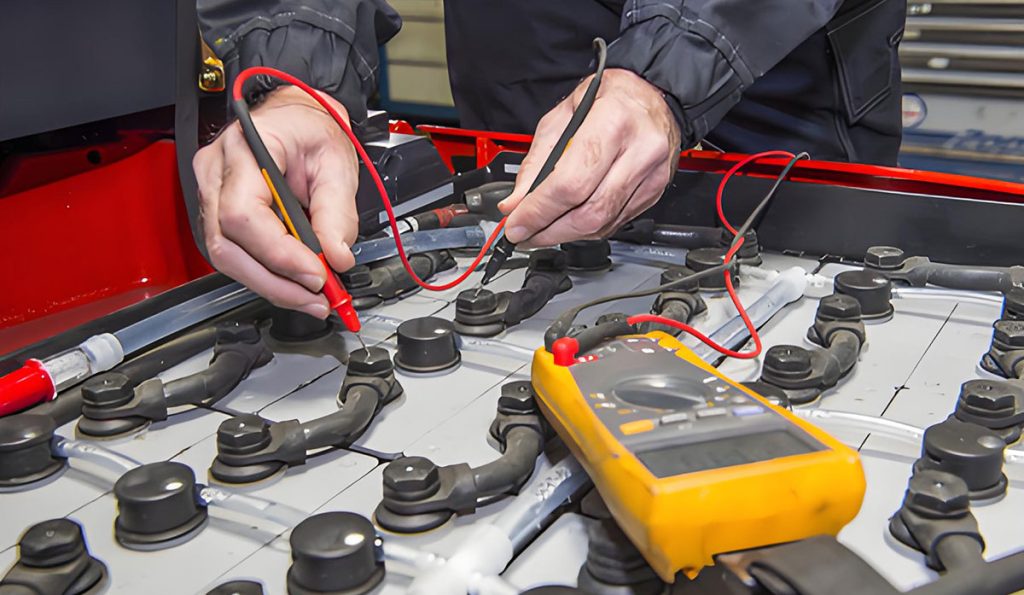Placing lead-acid batteries correctly is crucial for safety, performance, and longevity.
1. Safety Precautions
- Wear Protective Gear: Always use gloves and safety goggles.
- Avoid Sparks or Flames: Ensure no open flames or sparks are nearby.
- Good Ventilation: Place the battery in a well-ventilated area to prevent the buildup of hydrogen gas.
2. Selecting the Right Location
- Stable Surface: Ensure the battery is placed on a stable, non-conductive surface to prevent tipping over and short circuits.
- Dry Environment: Keep the battery in a dry place to avoid corrosion.
- Temperature Control: Place the battery in a temperature-controlled environment, ideally between 20°C (68°F) and 25°C (77°F), to optimize performance and lifespan.
- Accessibility: Make sure the battery is easily accessible for maintenance and inspection.
3. Battery Orientation
- Correct Orientation: Place flooded lead-acid batteries upright to prevent electrolyte leakage. Some sealed lead-acid batteries (like AGM and gel) can be placed in various orientations, but it’s best to check the manufacturer’s recommendations.
- Avoid Tilting: Ensure the battery is not tilted to avoid acid spillage, especially for flooded types.
4. Securing the Battery
- Battery Holders or Trays: Use appropriate battery holders or trays to secure the battery in place. This is particularly important for applications in vehicles or equipment subject to movement or vibration.
- Straps or Brackets: Use straps or brackets to further secure the battery if necessary.
5. Connecting the Battery
- Clean Terminals: Ensure the battery terminals are clean and free of corrosion before connecting.
- Correct Polarity: Always connect the positive terminal (+) to the positive lead and the negative terminal (−) to the negative lead. Incorrect polarity can cause damage.
- Tight Connections: Make sure all connections are tight to prevent loose connections, which can lead to arcing and overheating.
6. Ventilation and Cooling
- Adequate Ventilation: Ensure there is enough ventilation around the battery to dissipate any heat generated during charging and discharging.
- Hydrogen Gas Venting: For flooded lead-acid batteries, ensure there is proper venting to allow hydrogen gas to escape. In enclosed spaces, use vent caps or a venting system to direct gases outside.
7. Maintenance and Monitoring
- Regular Inspections: Periodically check the battery for signs of damage, leaks, or corrosion.
- Cleanliness: Keep the battery and its surroundings clean to prevent dust and debris from causing short circuits or interference.
- Fluid Levels: For flooded lead-acid batteries, regularly check and maintain the electrolyte levels, topping up with distilled water as necessary.
8. Avoid Common Mistakes
- Overcharging: Avoid overcharging the battery, which can lead to excessive heat and gas buildup.
- Deep Discharging: Prevent deep discharges, which can shorten the battery’s lifespan.
- Exposure to Extreme Temperatures: Protect the battery from extreme temperatures, both hot and cold, to maintain optimal performance.
By following these guidelines, you can ensure that lead-acid batteries are placed and maintained properly, enhancing their safety, performance, and longevity.


